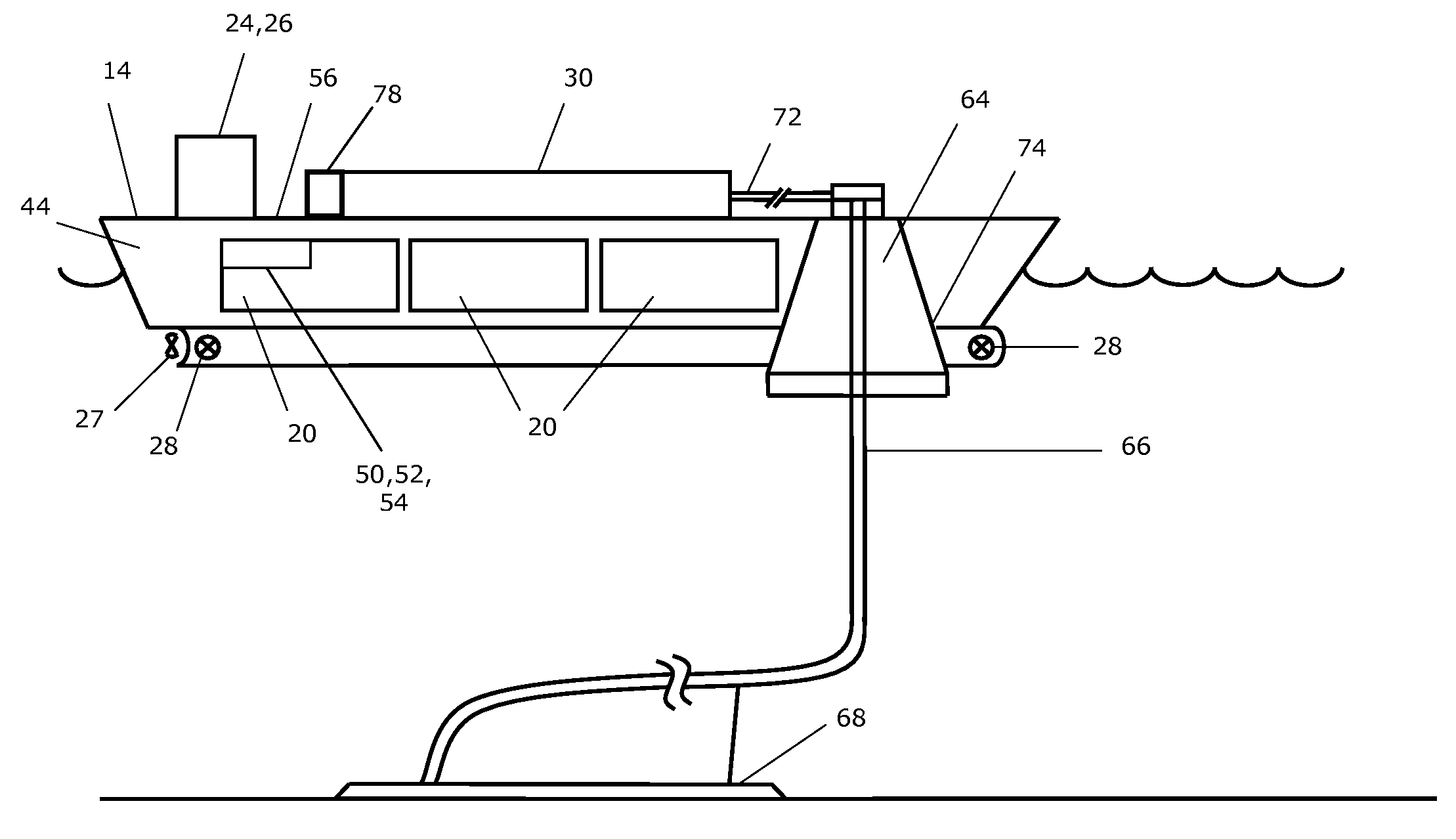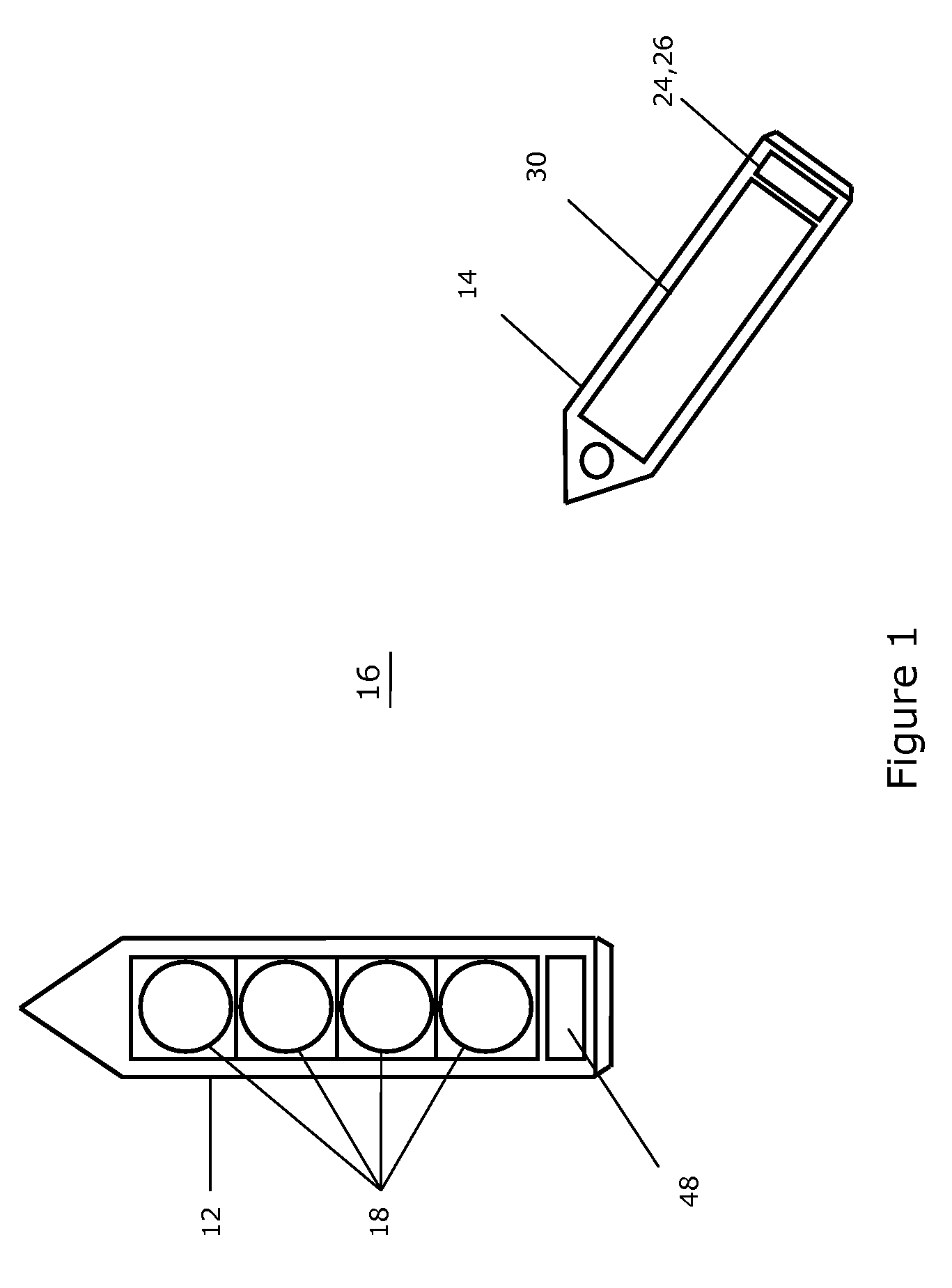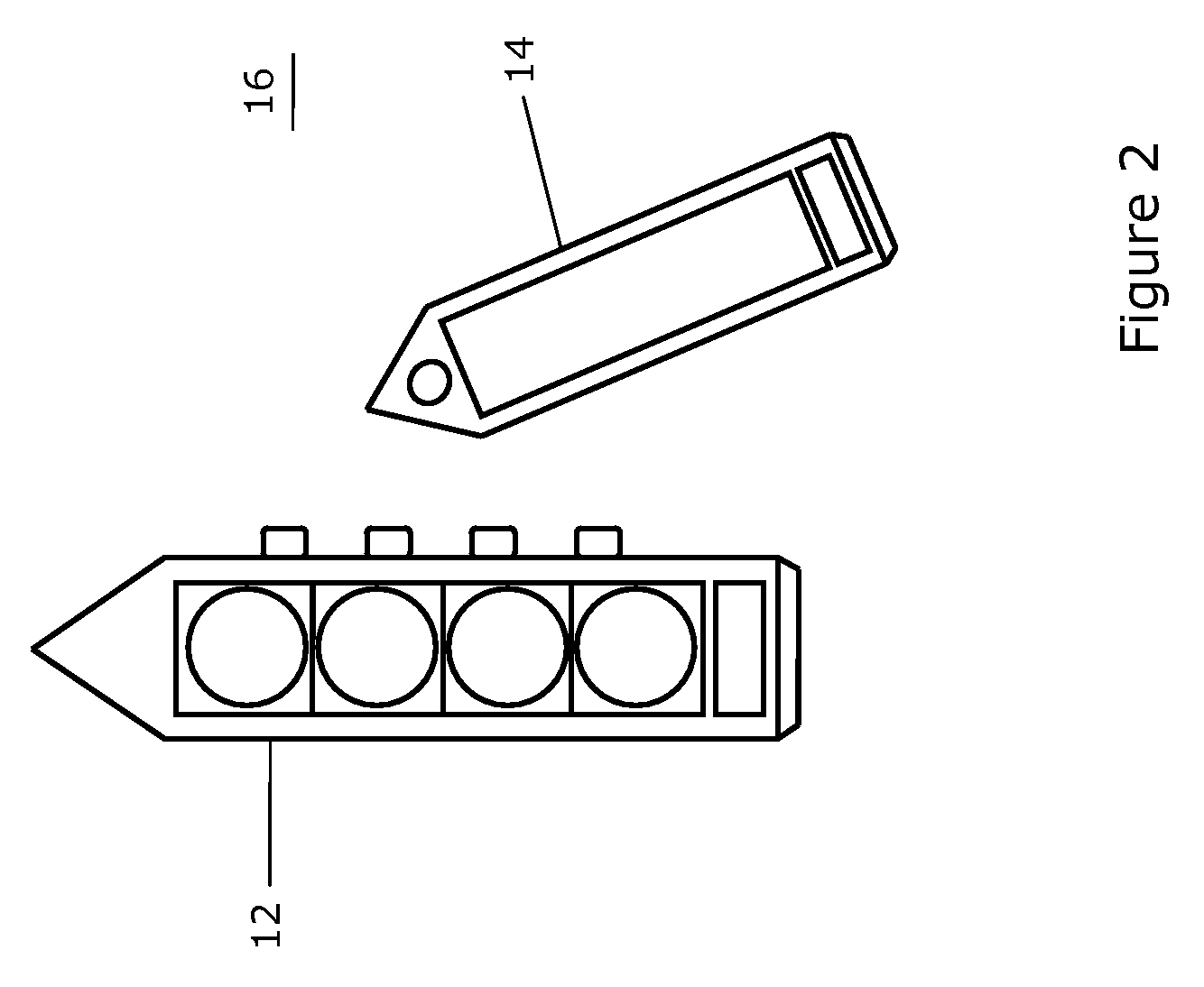Boil off gas management during ship-to-ship transfer of LNG
a technology of boiloff gas and transfer process, which is applied in the direction of gas/liquid distribution and storage, auxiliaries, and propulsive elements, can solve the problems of large cost of building and operating such facilities, and the typical size of regasification facilities, and achieve the effect of reducing the pressure within the storage tank of the receiving vessel
- Summary
- Abstract
- Description
- Claims
- Application Information
AI Technical Summary
Benefits of technology
Problems solved by technology
Method used
Image
Examples
Embodiment Construction
[0033]Particular embodiments of a process and system for ship-to-ship transfer of liquefied natural gas (LNG) from a delivery vessel to a receiving vessel at sea are now described. The terminology used herein is for the purpose of describing particular embodiments only, and is not intended to limit the scope of the present invention. Unless defined otherwise, all technical and scientific terms used herein have the same meanings as commonly understood by one of ordinary skill in the art to which this invention belongs.
[0034]An embodiment of the present invention is now described with reference to FIGS. 1 to 5. In this embodiment, a delivery vessel 12 is loaded with a cargo of LNG at an export terminal (not shown). In this example, the delivery vessel 12 is a traditional LNG Carrier fitted with Moss-style cryogenic storage tanks. The loaded delivery vessel 12 then travels towards an import terminal located typically in a different country to the country of origin where the export term...
PUM
 Login to View More
Login to View More Abstract
Description
Claims
Application Information
 Login to View More
Login to View More - R&D
- Intellectual Property
- Life Sciences
- Materials
- Tech Scout
- Unparalleled Data Quality
- Higher Quality Content
- 60% Fewer Hallucinations
Browse by: Latest US Patents, China's latest patents, Technical Efficacy Thesaurus, Application Domain, Technology Topic, Popular Technical Reports.
© 2025 PatSnap. All rights reserved.Legal|Privacy policy|Modern Slavery Act Transparency Statement|Sitemap|About US| Contact US: help@patsnap.com



